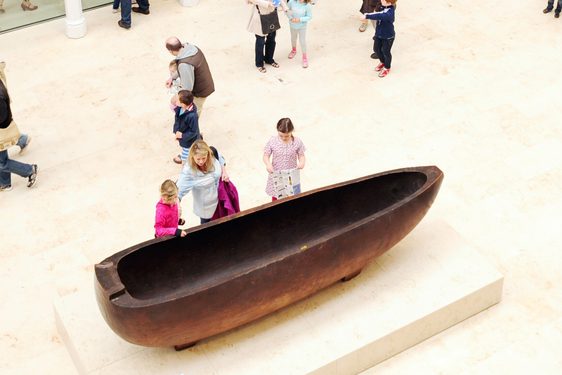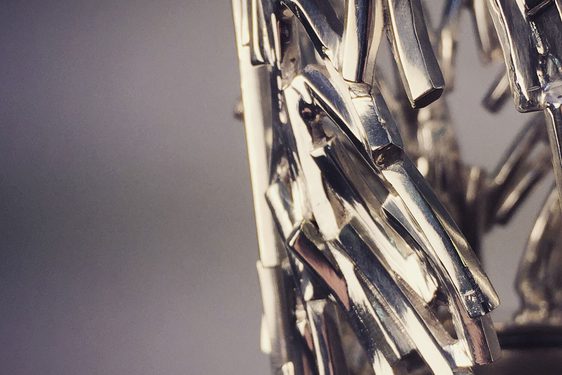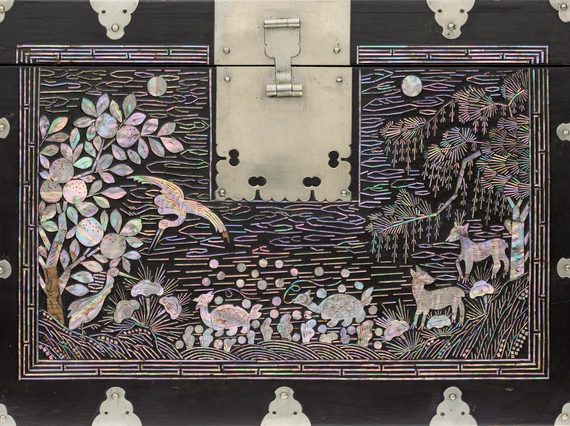
An introduction to our Korean collection
News Story
There are almost 1,000 objects in our Korean collection, which spans over 2,000 years. The focus of the collection is decorative arts and crafts dating from the late Joseon dynasty (1392–1910) to the 20th century. Read on to learn more and see some highlights.
1. Coins
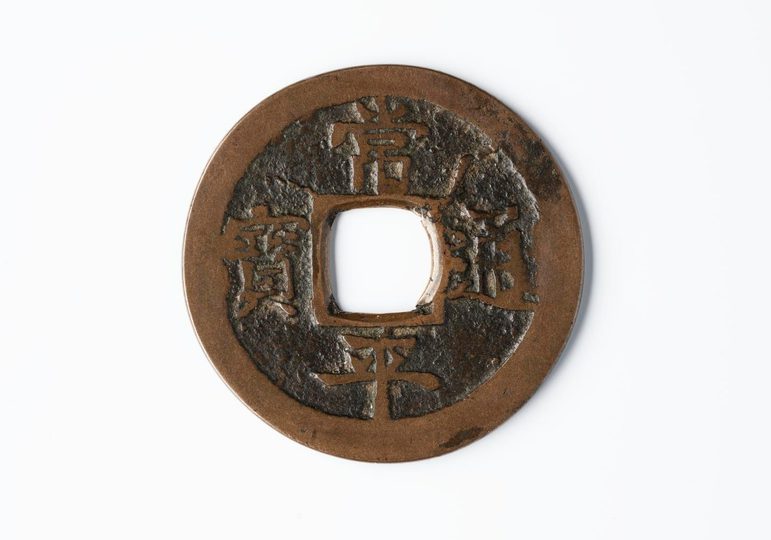
With over 650 coins, more than half of our Korean collection is numismatic. The coin shown above, known as Sangpyeong Tongbo due to the inscription, was the second Korean object to enter the Museum’s collection. It was purchased in 1898. The rest of the coins were part of a large donation in 1905.
2. Ceramics

Ceramics are the most significant component of the collection, and they represent developments over several periods of Korean history. Early wares include stoneware pedestal cups and vessels from the Three Kingdoms Period (57 BCE – 668 CE) to the Silla Dynasty (668 – 935). These come from a number of collectors and sources including Lieutenant-Colonel Kenneth Dingwall (1869–1946), Dr Neil Gordon Munro (1863–1942), and Reverend Stanley T Smith (1876–1954).
Korean ceramics have long been appreciated across East Asia. Celadon pieces with sanggam inlaid slip decoration from the Goryeo dynasty, like the lotus cup seen above, are particularly valued. Later ceramics in our collection range from buncheong stoneware from the early Joseon period to white porcelain (baekja) with both underglaze blue and underglaze red painting from the later Joseon. Examples of these can be seen in the Exploring East Asia gallery at the National Museum of Scotland.
3. Clothing and accessories
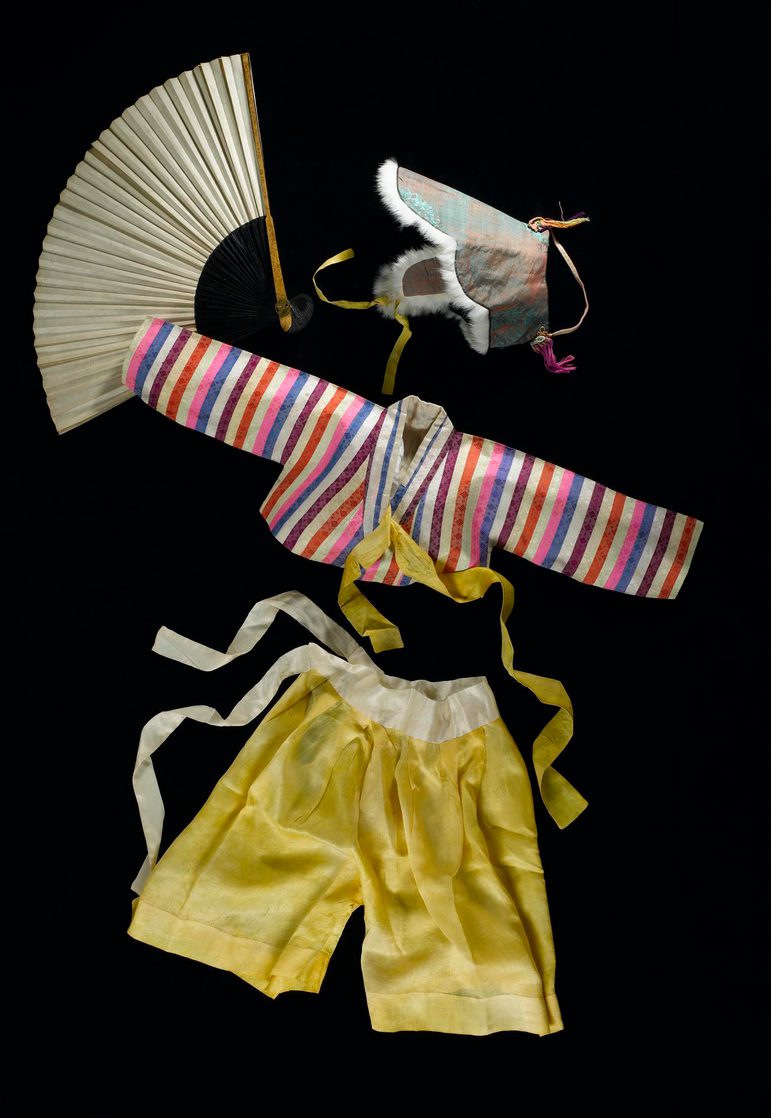
Clothing and accessories in the collection include several examples of Korea's national dress known as hanbok. Among these are items for adults and children of all genders, including skirts, jackets, and coats. Accessories include traditional footwear, headgear, fans, and purses. Early 20th-century children’s clothing, as seen above, is on display in the Patterns of Life gallery, Level 1. A reproduction of a 19th-century military outfit (gugunbok) is on display in the Exploring East Asia gallery.
4. 19th century Korea
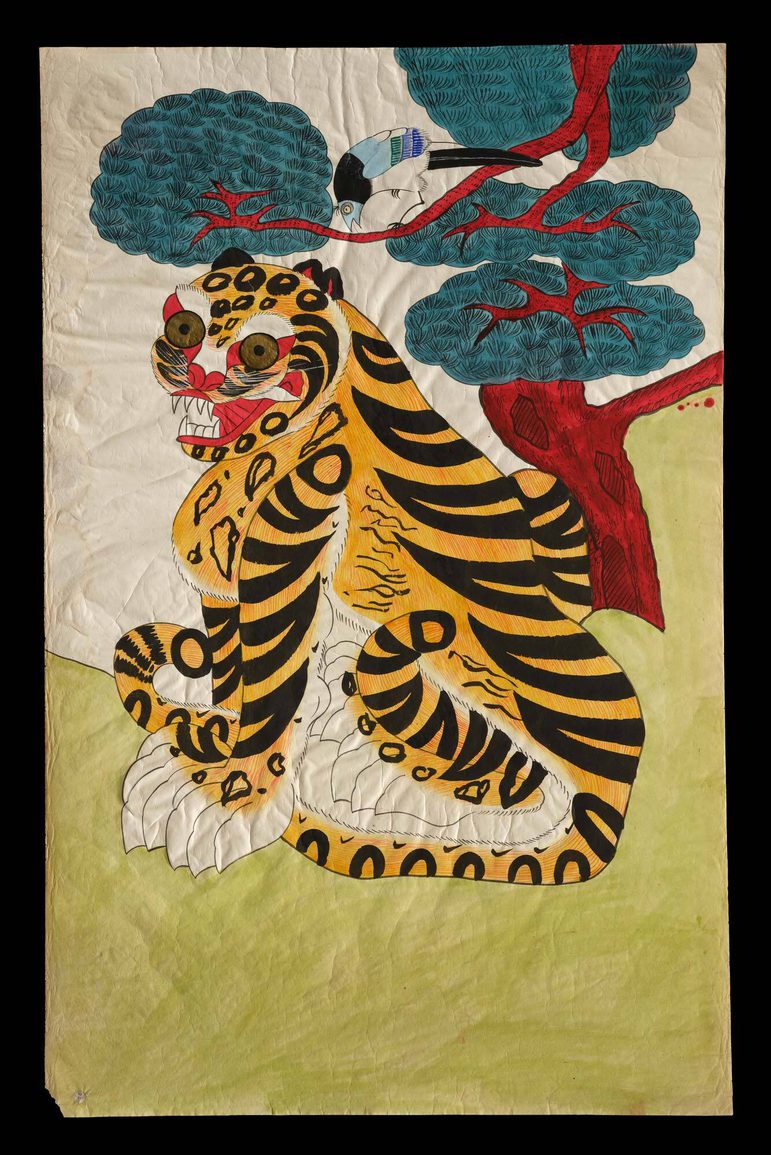
The collection features a number of pieces associated with life in late Joseon Korea, late 19th to early 20th century. These range from tobacco pipes to playing cards and gaming pieces, fans, a Korean gazetteer, paintings, and lacquer ware. The collection also includes traditional Korean furniture, for example brass and iron bound bandaji blanket chests of zelkova wood.
The tiger and magpie painting above is an example of 19th-century folk painting. A different genre and format of Korean painting, a literati style hanging scroll, can be seen in the Exploring East Asia gallery.
Find out more about Korean painting styles and the Stewart Lockhart Collection, on loan to National Museums Scotland from George Watson college.
5. 20th century and contemporary Korea
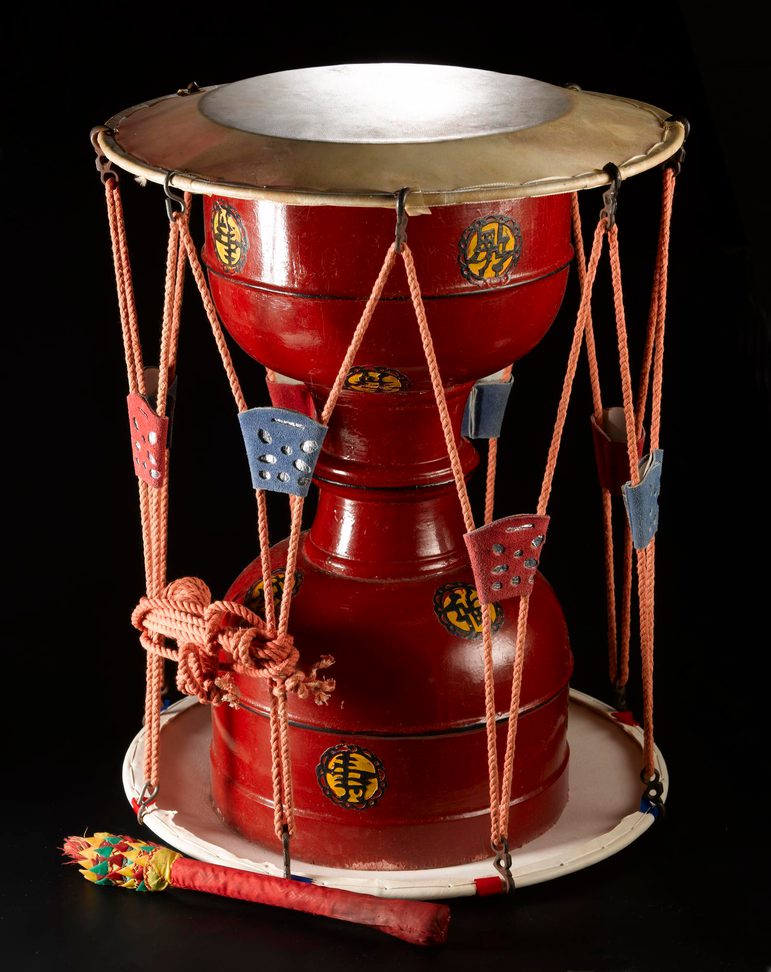
The 20th century collection was built in part through gifts. For example, in 2002 the Korean Ministry of Culture, Sports and Tourism donated pieces dating from the 1960s to the late 1990s to illustrate modern Korean shamanic practice, an important aspect of contemporary life. Brass bells and a drum (shown above) used in shamanic rituals are on display in Performance and Lives gallery at the National Museum of Scotland.
More recent acquisitions of Korean material have focused on work of some of South Korea's leading ceramicists. These include a white porcelain jar by Kim Yikyung (b. 1935), a stoneware jar by Cho Chung-hyun (b. 1940) entitled Summer Willow Greets Autumn, and a bowl from Suku Park's (b. 1947) Winter Series. These ceramics are on display alongside a glass vessel by Choi Keeryong (b.1976) and a lacquer food box by Sohn Daehyun (b. 1949) in the Exploring East Asia gallery. Korean Glass 15 by Choi, a Korean artist based in Edinburgh, is also on display in this gallery.
Header image: Lidded document box (soryu ham) of black lacquered wood inlaid with mother-of-pearl, depicting symbols of longevity, Korea, Joseon Dynasty, late 19th century. Museum reference A.1907.693.4.
